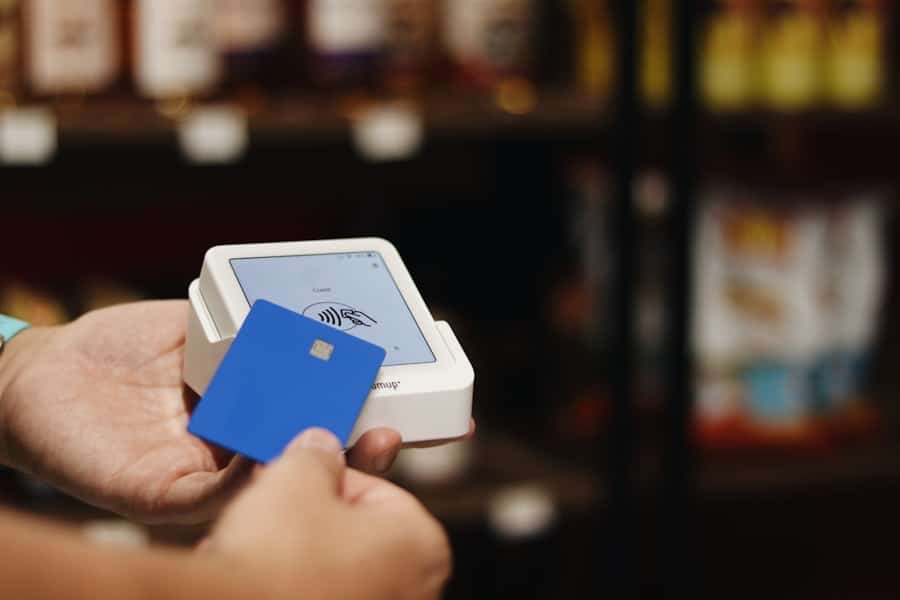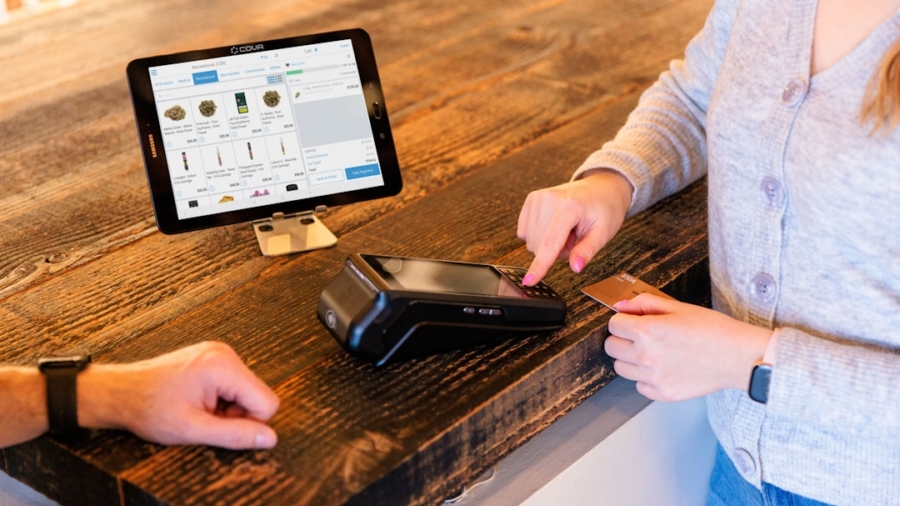In recent years, wearable devices have surged in popularity, transforming the landscape of contactless payments. Smartwatches, fitness trackers, and even smart rings have evolved from mere accessories into powerful financial tools. The convenience of making payments with a simple tap of a wrist or finger has resonated with consumers, particularly in an era where speed and efficiency are paramount.
Companies like Apple, Samsung, and Fitbit have led the charge, integrating payment capabilities into their devices. For instance, Apple Pay allows users to make transactions directly from their Apple Watch, eliminating the need to reach for a wallet or smartphone. This seamless integration not only enhances user experience but also encourages more people to adopt contactless payment methods.
The rise of wearable devices for contactless payments is also fueled by advancements in technology and changing consumer behaviors. As people become more health-conscious and tech-savvy, the demand for multifunctional devices that can track fitness metrics while also facilitating payments has grown. According to a report by Statista, the global wearable payment market is expected to reach $500 billion by 2025.
This growth is indicative of a broader trend where consumers prioritize convenience and security in their financial transactions. Moreover, the COVID-19 pandemic accelerated the shift towards contactless payments as people sought to minimize physical contact. Wearable devices emerged as a practical solution, allowing users to make purchases without touching shared surfaces, thus promoting hygiene and safety.
Key Takeaways
- Wearable devices are becoming increasingly popular for contactless payments, offering convenience and ease of use for consumers.
- Biometric technology, such as fingerprint and facial recognition, is being integrated into contactless payment systems to enhance security and authentication.
- Contactless payments are expanding to public transportation systems, allowing for seamless and efficient travel experiences for commuters.
- Blockchain technology is playing a significant role in enhancing the security and transparency of contactless payment transactions.
- Contactless payment apps and digital wallets are emerging as convenient and secure alternatives to traditional card-based payments.
The Integration of Biometric Technology in Contactless Payments
Biometric technology has become a cornerstone of modern contactless payment systems, enhancing both security and user convenience. By utilizing unique biological traits such as fingerprints, facial recognition, or iris scans, biometric authentication provides a robust layer of security that traditional PINs or passwords cannot match. For example, many smartphones now incorporate fingerprint scanners that allow users to authorize payments with a simple touch.
This not only streamlines the payment process but also significantly reduces the risk of fraud, as biometric data is inherently difficult to replicate. The integration of biometric technology into contactless payments is not limited to smartphones; it is also making its way into wearables and other devices. Companies like Mastercard and Visa are exploring biometric payment cards that feature embedded fingerprint sensors.
These cards allow users to authenticate transactions directly at the point of sale without needing to enter a PIN or provide a signature. This innovation not only enhances security but also caters to consumers’ growing desire for frictionless payment experiences. As biometric technology continues to evolve, it is likely that we will see even more sophisticated applications in the realm of contactless payments, further solidifying its role in the future of financial transactions.
The Expansion of Contactless Payments to Public Transportation

The integration of contactless payment systems into public transportation networks represents a significant advancement in urban mobility. Cities around the world are increasingly adopting contactless payment solutions to streamline fare collection and enhance the commuter experience. For instance, London’s Oyster card system has evolved to allow contactless payments via debit and credit cards, as well as mobile wallets.
This shift has simplified the boarding process for millions of passengers, reducing wait times and improving overall efficiency. Moreover, cities like New York and San Francisco are following suit by implementing similar systems that enable riders to tap their cards or smartphones on fare readers.
The convenience of contactless payments in public transport can lead to increased ridership, which is crucial for reducing traffic congestion and promoting sustainable urban development. As cities continue to invest in smart infrastructure, the expansion of contactless payments in public transportation will likely play a pivotal role in shaping the future of urban mobility.
The Role of Blockchain Technology in Contactless Payments
Blockchain technology is increasingly being recognized for its potential to revolutionize contactless payments by providing enhanced security, transparency, and efficiency. At its core, blockchain is a decentralized ledger that records transactions across multiple computers in a way that ensures data integrity and security. This technology can significantly reduce fraud and transaction costs associated with traditional payment systems.
For example, cryptocurrencies like Bitcoin and Ethereum utilize blockchain to facilitate peer-to-peer transactions without the need for intermediaries such as banks. In the context of contactless payments, blockchain can streamline transaction processes by enabling instant settlements and reducing processing times. Companies like Ripple are already leveraging blockchain technology to facilitate cross-border payments with minimal fees and delays.
Additionally, smart contracts—self-executing contracts with the terms directly written into code—can automate various aspects of payment processing, further enhancing efficiency. As businesses and consumers alike seek faster and more secure payment options, the integration of blockchain technology into contactless payment systems could become increasingly prevalent.
The Emergence of Contactless Payment Apps and Digital Wallets
The proliferation of smartphones has given rise to a new wave of contactless payment apps and digital wallets that are reshaping how consumers manage their finances. Applications like Google Pay, Apple Pay, and Venmo have gained immense popularity due to their user-friendly interfaces and seamless integration with existing banking systems. These digital wallets allow users to store multiple payment methods securely while enabling quick transactions at participating merchants through NFC (Near Field Communication) technology.
Moreover, the emergence of peer-to-peer payment platforms has transformed social interactions around money. Users can easily split bills or send money to friends with just a few taps on their smartphones. This convenience has made contactless payment apps particularly appealing to younger generations who prioritize speed and ease of use in their financial transactions.
As these apps continue to evolve, incorporating features such as loyalty programs and budgeting tools, they are likely to become even more integral to everyday financial activities.
The Impact of Internet of Things (IoT) on Contactless Payments

The Internet of Things (IoT) is poised to have a profound impact on the future of contactless payments by creating an interconnected ecosystem where devices communicate seamlessly with one another. Smart appliances, vehicles, and wearables equipped with IoT capabilities can facilitate automatic transactions without requiring direct user intervention. For instance, imagine a scenario where your smart refrigerator automatically orders groceries online when supplies run low and processes the payment through your digital wallet—all without you needing to lift a finger.
This level of automation not only enhances convenience but also opens up new avenues for businesses to engage with consumers. Retailers can leverage IoT data to personalize offers based on purchasing habits or even automate loyalty rewards through connected devices. However, this interconnectedness also raises questions about data privacy and security as more devices become involved in financial transactions.
Ensuring that these systems are secure will be paramount as IoT continues to expand its footprint in the realm of contactless payments.
The Shift towards Contactless Payments in Developing Countries
As technology continues to advance globally, developing countries are experiencing a notable shift towards contactless payments. In regions where traditional banking infrastructure is limited or underdeveloped, mobile payment solutions have emerged as a viable alternative for financial transactions. Countries like Kenya have seen remarkable success with mobile money platforms such as M-Pesa, which allows users to send money and make payments using their mobile phones without needing a bank account.
This trend is not only democratizing access to financial services but also fostering economic growth by enabling small businesses to accept digital payments easily. As smartphone penetration increases in developing nations, so does the adoption of contactless payment technologies. Governments and financial institutions are recognizing the potential benefits of these systems in promoting financial inclusion and driving economic development.
By embracing contactless payments, developing countries can leapfrog traditional banking models and create more efficient financial ecosystems.
The Potential Challenges and Security Concerns of Contactless Payments Beyond Cards
Despite the numerous advantages associated with contactless payments, several challenges and security concerns persist that warrant attention from consumers and industry stakeholders alike. One significant issue is the risk of unauthorized transactions due to lost or stolen devices. While biometric authentication adds a layer of security, it is not foolproof; sophisticated hackers may still find ways to exploit vulnerabilities in payment systems or devices.
Additionally, there are concerns regarding data privacy as consumers increasingly share personal information through digital wallets and payment apps.
Regulatory frameworks must evolve alongside technological advancements to ensure that consumer rights are safeguarded in this rapidly changing landscape.
Furthermore, the reliance on technology for financial transactions can create barriers for certain demographics who may be less tech-savvy or lack access to necessary devices or internet connectivity. Addressing these disparities will be crucial for ensuring that contactless payment solutions are inclusive and accessible to all segments of society. As the landscape of contactless payments continues to evolve, it will be essential for stakeholders—including businesses, consumers, and regulators—to collaborate in addressing these challenges while harnessing the potential benefits that this technology offers.
In the rapidly evolving landscape of digital transactions, the future of contactless payments is poised to extend beyond traditional cards, embracing innovative technologies and platforms. As consumers increasingly seek seamless and secure payment methods, the integration of mobile devices into this ecosystem becomes crucial. For those interested in exploring how smartphones play a pivotal role in this transformation, the article on how to choose a smartphone for your girlfriend offers insights into selecting devices that support advanced payment features, ensuring both functionality and style. This connection highlights the importance of choosing the right technology to stay ahead in the contactless payment revolution.
FAQs
What are contactless payments beyond cards?
Contactless payments beyond cards refer to the use of technology such as mobile wallets, wearables, and other devices to make payments without the need for physical cards.
How do contactless payments beyond cards work?
Contactless payments beyond cards typically use near field communication (NFC) technology to enable secure and convenient transactions. This technology allows devices to communicate with payment terminals when in close proximity, making the payment process quick and easy.
What are the benefits of contactless payments beyond cards?
Contactless payments beyond cards offer benefits such as increased convenience, faster transaction times, enhanced security features, and the ability to make payments without carrying physical cards.
What are some examples of contactless payment methods beyond cards?
Examples of contactless payment methods beyond cards include mobile wallets like Apple Pay and Google Pay, wearable devices such as smartwatches and fitness trackers, and other innovative payment solutions that leverage NFC technology.
What is the future of contactless payments beyond cards?
The future of contactless payments beyond cards is expected to involve further integration of payment technology into everyday devices, increased adoption of mobile and wearable payment solutions, and continued advancements in security and authentication methods.

